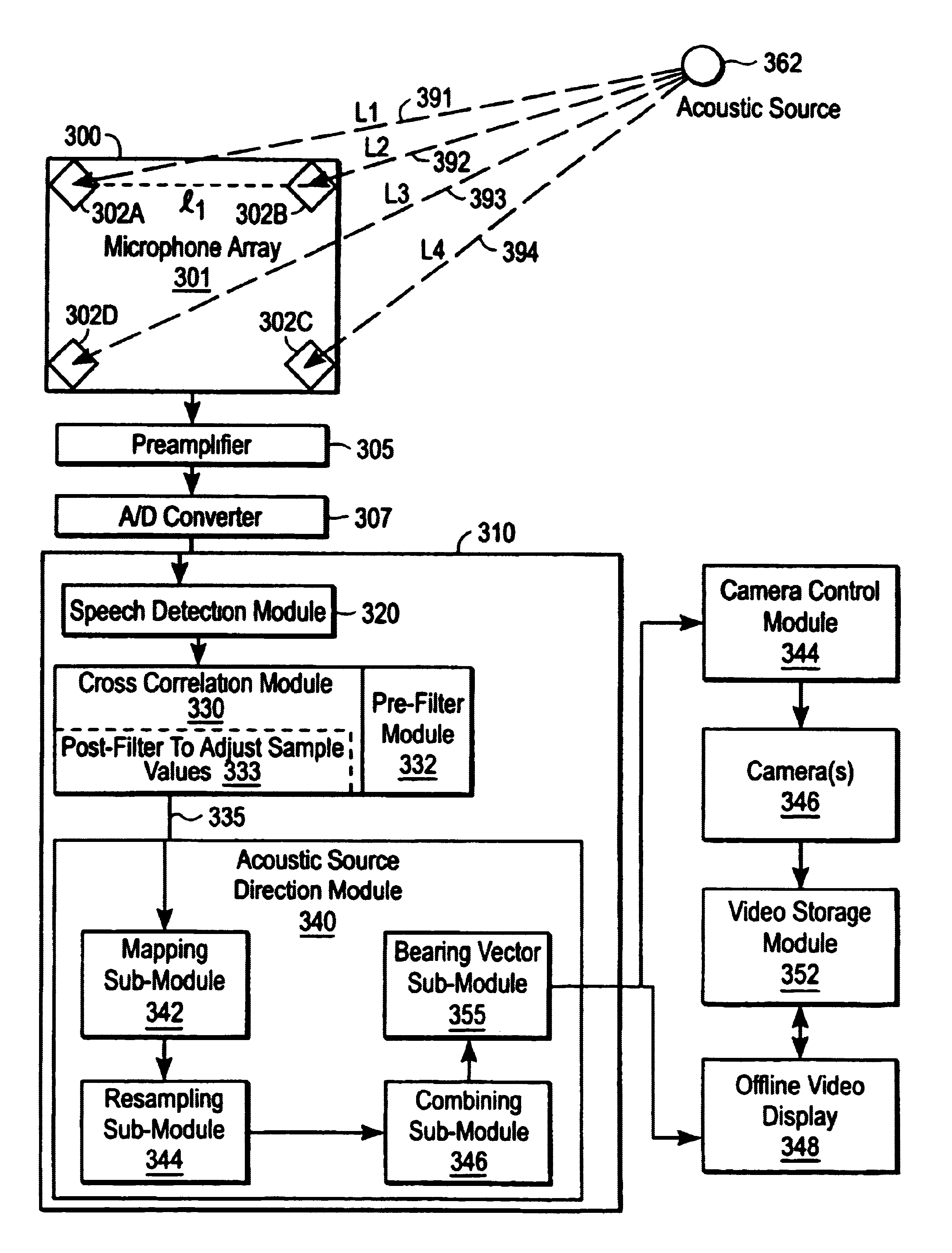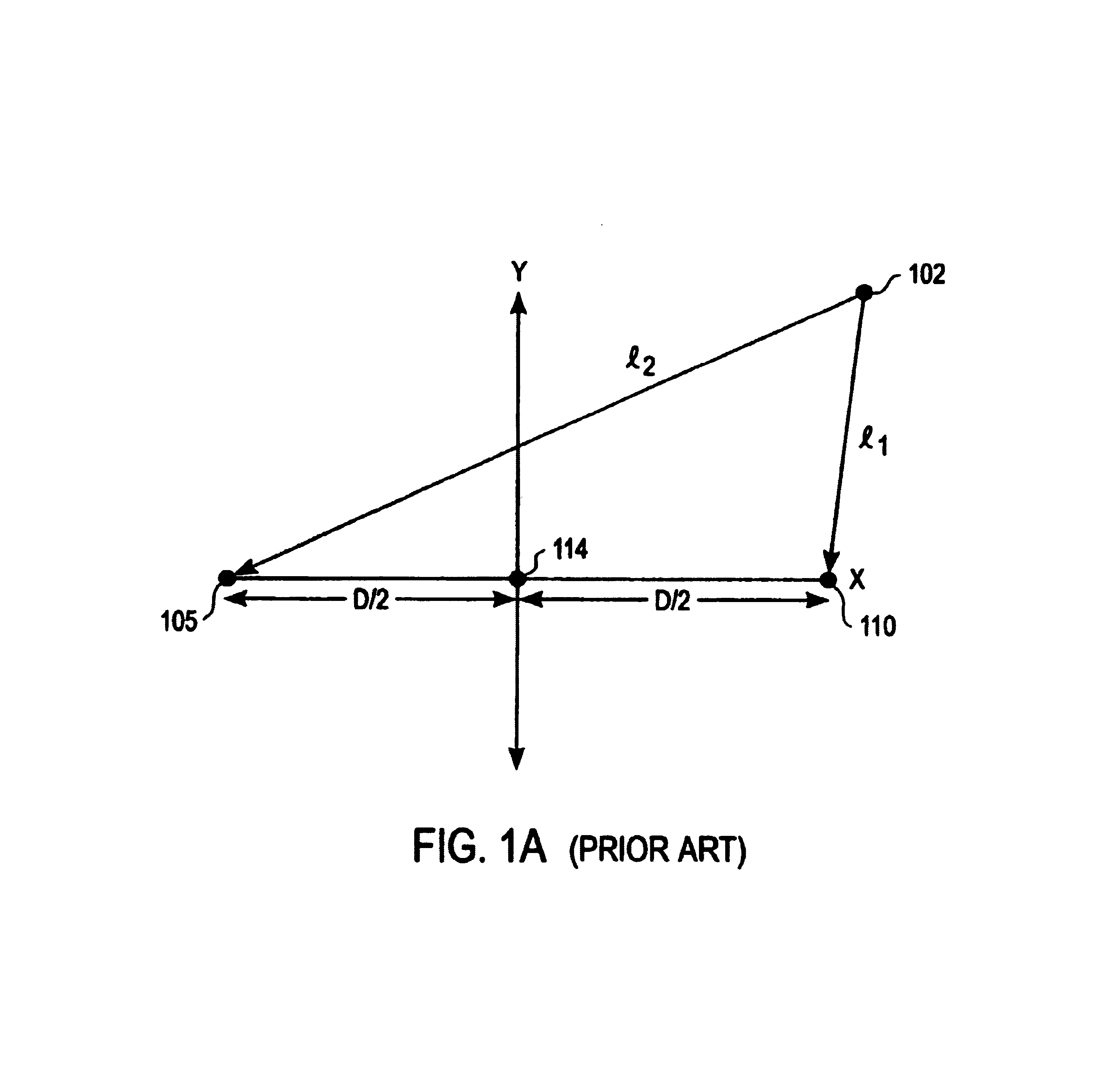Acoustic source localization system and method
a technology of acoustic source and localization method, which is applied in the field of determining the location of acoustic sources, can solve the problems of insufficient resolution of the direction of an acoustic source, inability to accurately determine the direction of the source, and inability to achieve the robustness of the cone-intersection method, etc., and achieves the effect of avoiding significant errors in the calculation of tdes from the peak of a correlation function
- Summary
- Abstract
- Description
- Claims
- Application Information
AI Technical Summary
Benefits of technology
Problems solved by technology
Method used
Image
Examples
Embodiment Construction
[0030]FIG. 3 is a block diagram illustrating one embodiment of an apparatus for practicing the acoustic source location method of the present invention. A microphone array 300 has three or more microphones 302 that are spaced apart from each other. Signals from two or more pairs of microphones 302 are used to generate information that can be used to determine a likely bearing to an acoustic source 362 from an origin 301. Since the microphones 302 are spaced apart, the distance Li from acoustic source 362 to each microphone may differ, as indicated by lines 391, 392, 393, and 394. Consequently, there will be a difference in the time response of acoustic signals reaching each of the two microphones in a pair due to differences in acoustic path length for acoustic signals to reach each of the two microphones of the pair.
[0031]Each pair of microphones has an associated separation distance between them and an orientation of its two microphones. For example, for the microphone pair consis...
PUM
 Login to View More
Login to View More Abstract
Description
Claims
Application Information
 Login to View More
Login to View More - R&D
- Intellectual Property
- Life Sciences
- Materials
- Tech Scout
- Unparalleled Data Quality
- Higher Quality Content
- 60% Fewer Hallucinations
Browse by: Latest US Patents, China's latest patents, Technical Efficacy Thesaurus, Application Domain, Technology Topic, Popular Technical Reports.
© 2025 PatSnap. All rights reserved.Legal|Privacy policy|Modern Slavery Act Transparency Statement|Sitemap|About US| Contact US: help@patsnap.com



